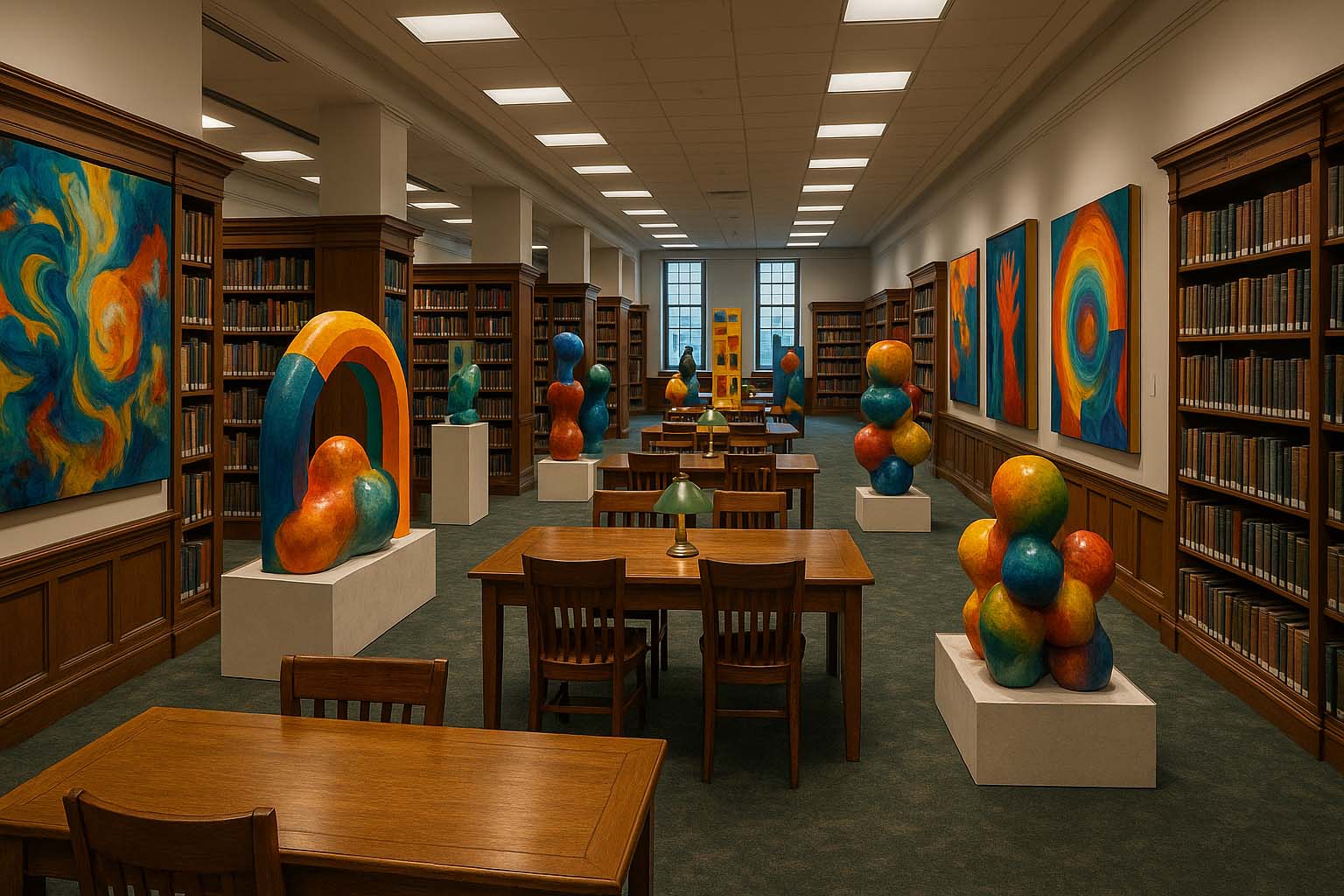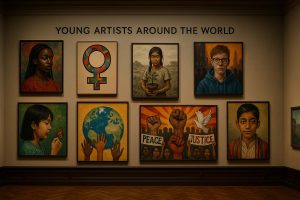
Art Pop-Ups: How Libraries Around the World Are Supporting Local Art Communities
Modern libraries are no longer silent corners meant only for reading. In cities across the globe, they are turning into lively spaces that uplift local creativity through art pop-ups—temporary exhibits that give artists a platform to share their work with the community. These initiatives offer something new to long-time library users, art supporters, and even children discovering art for the first time.
- • Art pop-ups help transform libraries into public hubs for creativity and ideas.
- • They provide an affordable venue where artists and readers can interact.
- • From Toronto to Tokyo, this model reflects a global shift toward accessible cultural experiences.
Libraries as Creative Meeting Grounds
Libraries used to be filled only with books and quiet reading tables. Today, they’re places of color, light, and visual inspiration. In Berlin, the Zentral- und Landesbibliothek displayed artworks by young refugees in their lobby. In New York, the Brooklyn Public Library opened a room for VR-based installations. These actions serve two major functions: they attract more visitors and build bridges for local artists who cannot afford gallery space.
The setup doesn’t cost much. All it takes is careful lighting, simple walls or panels, and a few social media posts. In return, the response is strong. The British Library reported a 23% increase in new library memberships within five months of launching their art pop-up program in 2024.
Why Art Pop-Ups Matter to the Community
For readers, these exhibits feel like surprise rewards while borrowing books. For artists, the benefit goes beyond expression—they gain a chance to engage with people without paying for space. In Surrey, Canada, a pop-up featured three LGBTQ+ painters focusing on themes of identity. Visitors stopped to observe, asked questions, and shared stories. These simple exchanges sparked honest conversations around inclusion.
There are economic benefits too. The Chicago Public Library saw a 12% boost in sales at their café and souvenir area during exhibits. This small shift supports nearby businesses and raises visibility for other library programs. While people view the art, they may also notice an author talk or free workshop nearby. Art becomes a quiet invitation to explore more of what the library offers.
What Other Countries Are Doing
Approaches vary by region, but the goal remains: use what the library already has to support creative exchange.
Toronto, Canada
The Toronto Reference Library used its open atrium to display textile art by Indigenous creators. The event ended with a live weaving demo, letting visitors try it themselves.
Copenhagen, Denmark
The city libraries teamed up with a local printmakers’ guild to host a linocut pop-up. Guests printed their own posters and left with something handmade.
Tokyo, Japan
At Taitō City Library, a digital art series focused on memory and aging. They used an LED wall near the foreign language section, which drew in many international students.
Melbourne, Australia
The State Library Victoria offered a pop-up studio on their reading room balcony. They added sound-absorbing panels so artists could sketch quietly. The spotlight was on urban architecture drawn by local illustrators.
Stories from Artists and Library Visitors
Marta, a Ukrainian sculptor who moved to Madrid, joined her first pop-up because she couldn’t afford a gallery. “Every day, a child would ask how I carved wood. I’d explain that the piece came from an old library bench,” she said. Her story is common. In a 2023 survey by the International Federation of Library Associations, 78% of artists said pop-ups helped them reach a new audience.
Readers also get something valuable. When they see a collage made from old newspapers, it sparks ideas. What else can be done with aged literature? This kind of encounter builds a new bridge between books and visual expression. Instead of separating art and reading, pop-ups show they can live side by side.
Challenges and Workable Fixes
Success doesn’t come without obstacles. Libraries face real concerns when hosting public exhibits. Below are some common problems with practical ways to address them:
Limited space: Use modular panels and folding tables that can be removed quickly.
Security issues: The Seattle Public Library trained volunteer art stewards to watch over exhibits during busy hours.
Storage after hours: Helsinki’s city library stored artwork on climate-controlled carts in their utility rooms.
Funding needs: The National Library of Wales secured grants from small businesses to help cover printing and lighting expenses.
Getting Involved
For library teams hoping to begin, the first step is to create a plan. Design a curriculum based on community interests, invite local artists, and sketch a schedule. Post an open call on social media using the hashtag #LibraryArtPopUp. When artists sign up, build your layout to match how visitors naturally move through the space. For instance, place a demo table near the reference desk where conversations already happen.
If you’re an artist searching for a venue, create a simple PDF portfolio and send it to the library’s program coordinator. Focus on how your work reflects the local culture. The space may be free, but the value lies in connections, exposure, and the role your art plays in public life.
As a visitor, come with curiosity. Bring a small notepad to jot down questions or creative thoughts. If there’s a session with the artist, don’t hesitate to ask something. That dialogue is part of what makes the pop-up experience special.
Looking Ahead
Libraries are starting to explore new ways to make exhibits interactive. Some are working with augmented reality (AR) tools. Imagine pointing your phone at a painting and seeing it animate as you sit in a quiet corner. A pilot program in Geneva, funded by the European Cultural Foundation, tested this technology last year. The result? A 35% rise in young visitors, according to their internal report.
In the next few years, more international partnerships are expected. A sculpture in Amsterdam may be connected to a live discussion in São Paulo, streamed between libraries. These new efforts don’t replace what libraries already offer. Instead, they add layers to how people can engage with knowledge and creativity.
What matters is balance. The calm of the library, combined with fresh ways to see art, creates something meaningful. These places will continue to grow as spaces where books and culture meet.
Strengthening the Bond Between Art and Libraries
Libraries have long held culture in their shelves. Through art pop-ups, they renew this tradition in ways that speak to all walks of life. These projects are easy to launch, offer wide community involvement, and reach people beyond regular library-goers. Each new exhibit reminds us that art doesn’t need a formal gallery. It can bloom anywhere there’s light, walls, and a welcoming space.
Though countries differ in language and method, the message remains constant: art belongs to everyone.

